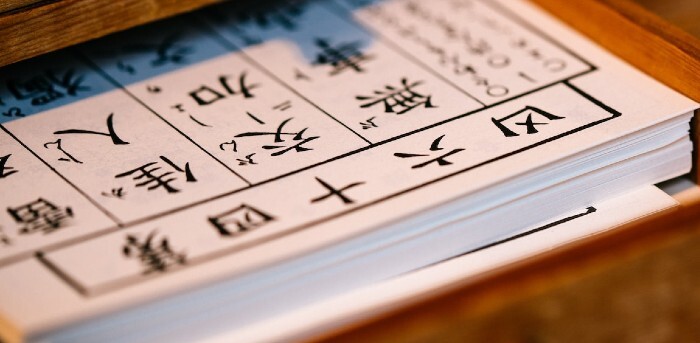The Long and Not Always Tomatoy History of Ketchup

Even if your kitchen looks like it was ransacked by post-apocalyptic foot soldiers (we were all 22 once), you’ve almost certainly got a bottle of ketchup in your fridge. It lasts forever, it’s a must for the kinds of foods 22-year-olds eat, and you can tell yourself it’s technically a vegetable because it once had a conversation with a tomato. But ketchup came from Asia, where tomatoes are generally pretty thin on the ground, and there was once a kaleidoscope of different and often questionable ketchups available.
The First Ketchup

Ketchup was originally a fermented fish sauce. It originated in either China or Vietnam, but it was all the rage among the Chinese by 300 B.C.E. What’s important is it wasn’t anywhere near a tomato.
The Word “Ketchup”

It wasn’t even called “ketchup” until fairly recently, at least not with that spelling. In various dialects, it was called “ge-thcup,” “koe-cheup,” “kê-tsiap,” or “ke-tchup.” You get the idea. It all pretty much means “fish sauce.”
Thank Drunken Sailors
Ketchup came to the West when British and Dutch merchants ventured east looking not for condiments but a different kind of sauce. China was a major exporter of the world’s first widely produced liquor, called arrack, 17th-century Europeans couldn’t get enough of. While they were partying in China, they discovered the country’s dope snacks and started bringing ketchup back with them, too.
English Evolution

The less globetrotting English loved ketchup, too, but they had trouble recreating it at home, leading to a period of cooking down pretty much anything -- walnuts, lemons, celery, whatever they had lying around -- and calling it ketchup. It was a dark time.
Mushroom Ketchup

From these experiments, a few winners stood out, but most of us wouldn’t regard them as such today. Mushroom ketchup was the ketchup of choice in 18th-century England and America. It was even said to be a favorite of Jane Austen, which explains why her characters were always so mopey.
Wine and Anchovy Ketchup
The cookbooks of the era reveal another popular fave: “white ketchup” made with anchovies and white wine. It might be nice on a tray of hoeur d'oeuvres, but it don’t belong on french fries.
19th-Century “Modern” Ketchup

The first recipe for modern tomato ketchup was published in 1812 sounds good as shit, listing brandy as one of its ingredients, but not everyone agreed. This was a time when people still routinely died from not washing their hands, so preserving a fruit as fickle as tomatoes proved challenging and often failed, leading one French cookbook author to call it a “filthy, decomposed, and putrid” substance. For once, this isn’t snobbery.
Heinz… Horseradish?

This is where Henry John Heinz comes in, but ketchup of any kind wasn’t his first choice. He started out selling horseradish, so if late 19th-century Americans had a different palate, we might be a spicier country. Alas, his business failed, so he decided to apply himself to this tomato ketchup problem.
Becoming “Ketchup”
While he was standardizing its flavor, Heinz also ended up standardizing the spelling of “ketchup.” Naturally, westerners couldn’t be bothered to learn a word from a different language, so they spelled it however, including the offensive “catsup,” until Heinz labeled his product “ketchup” specifically because it was an uncommon spelling. He wanted his product to stand out, begetting an entire industry of Z’s where they don’t belong.
How Heinz Made Ketchup Its Bitch

At the time, most commercial ketchup producers solved the tomato ketchup problem by loading it up with benzoates, but then the era’s Dr. Ozes went on a crusade against chemical preservatives and Heinz saw his in. He figured out that if you picked your tomatoes a little more carefully than “whatever scraps we found on the ground,” add a ton of vinegar and sugar, and actually wash everything properly, your nice bottle of ketchup doesn’t immediately turn into mold sauce or explode in your hand (seriously). It turns out benzoates are actually fine in moderate quantities, but hey, we got better ketchup out of it.
Viva Tomatoes

Europeans had long feared tomatoes because they thought they were poisonous (though they were actually being poisoned by their lead plates, which leached into the acidic fruit), and the whole “exploding ketchup” thing didn’t help. But after Heinz made them realize tomatoes are delicious, actually, all the other ketchup flavors up and vanished because every other commercial ketchup company started copying Heinz and everyone stopped making their own ketchup because why would you do that when you can just buy it? That’s for people who wear puffy sleeves.
Ketchup Fascism
Ketchup has changed very little since the Heinz days because, as varied as it used to be, today’s consumers are about as tolerant of any differences in the formula as internet commenters are of diversity of genre fiction. Remember EZ Squirt? Unless you lived through the Willennium, probably not. It was just regular Heinz ketchup but it came in a rainbow of colors, which was so off-putting that it was discontinued within just a few years. We demand perfect ketchup conformity.
Banana Ketchup

That doesn’t mean other cultures haven’t put their own spin on ketchup. After World War II, the Philippines experienced a catastrophic tomato shortage, so they started making ketchup out of their much more abundant bananas. It sounds like a nationwide prank, but it was so popular that it’s still a local favorite (and honestly pretty tasty).
Ketchup Cake
Meanwhile, something went seriously wrong in the great north, where Heinz Canada began publishing recipes for something called ketchup cake on their bottles in 2009. It’s basically a normal cake with a little ketchup and a lot of food coloring, but it caught on in the country and recently became a TikTok trend, which is almost certainly one of those signs of an impending doomsday from the Bible.
Ketchup Wars

While countries like Canada might put their own stamp on ketchup by putting it in their cakes and macaroni and cheese and other places where it doesn’t belong, ketchup is still considered such a uniquely American product that when they want to punish us, as in a recent round of retaliatory tariffs, they don’t impose it on anything that’s actually valuable. They do it on ketchup.
Top image: Karsten Winegeart/Unsplash